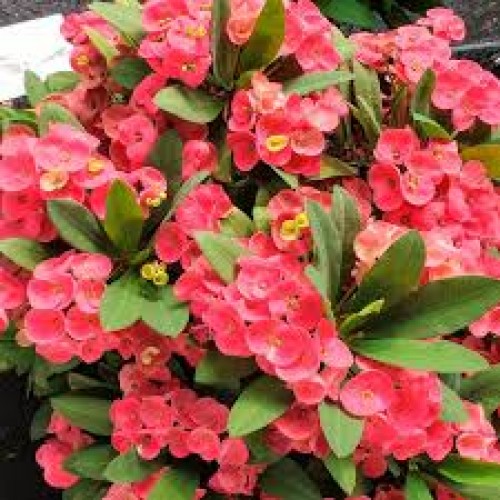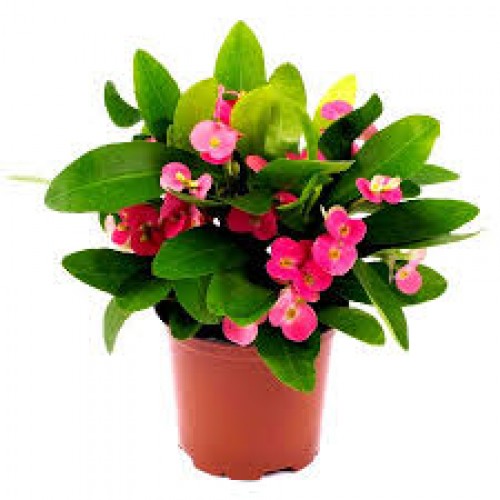60%
off
off
-
Sold
-

-

out
Euphorbia Plant Guide
Overview
Euphorbia is a diverse genus encompassing over 2,000 species, including succulents, shrubs, and herbaceous plants. Known for their unique structures and milky sap, Euphorbias are native to various regions worldwide and are popular for both ornamental and medicinal purposes.
Characteristics
- Genus: Euphorbia
- Common Names: Spurge, Crown of Thorns, Pencil Cactus, Firestick Plant
- Plant Type: Succulent, shrub, or herbaceous plant
- Foliage: Varies by species; can be leafy or have minimal leaves
- Flowers: Small and often inconspicuous; surrounded by colorful bracts in some species
- Sap: Milky latex, which can be toxic and irritating to skin and eyes
- Growth Habit: Ranges from low-growing ground covers to tall, tree-like forms
Care & Maintenance
- Light: Prefers bright, indirect sunlight; some species tolerate full sun.
- Soil: Requires well-drained soil; a cactus or succulent mix is ideal.
- Watering: Allow the soil to dry out completely between waterings; overwatering can lead to root rot.
- Temperature: Thrives in temperatures between 60°F to 90°F (15°C to 32°C); protect from frost.
- Humidity: Adaptable to various humidity levels but generally prefers dry conditions.
- Fertilization: Feed with a balanced, diluted fertilizer during the growing season (spring and summer).
- Pruning: Prune to maintain shape and remove any dead or damaged parts; wear gloves to avoid contact with the sap.
- Propagation: Typically propagated through stem cuttings; allow cuttings to callous before planting.
Uses & Advantages
- Ornamental Appeal: Euphorbias are popular in landscaping and as houseplants due to their diverse forms and striking appearances.
- Medicinal Uses: Certain species, like Euphorbia hirta, have been used traditionally to treat respiratory ailments, skin conditions, and gastrointestinal issues.
- Pest Repellent: Some Euphorbia species act as natural insect repellents.
- Drought Tolerance: Their succulent nature allows them to store water, making them ideal for xeriscaping and low-water gardens.
- Air Purification: Certain species are believed to have air-purifying properties, enhancing indoor air quality.
Precautions
- Toxicity: The milky sap of Euphorbia can be toxic and cause skin and eye irritation; handle with care, wearing gloves and protective eyewear.
- Invasiveness: Some species can spread aggressively in certain environments; monitor growth and manage accordingly.
- Pet Safety: Euphorbia plants can be harmful to pets if ingested; keep them out of reach of animals.
Ideal Growing Conditions
- Climate: Warm, dry climates with temperatures between 60°F to 90°F (15°C to 32°C).
- Planting Time: Spring or early summer, after the last frost.
- Spacing: Space plants according to their mature size to ensure good air circulation.
<
Live Plants
Customer Question & Answers
Don't get what you are looking for? Ask Question